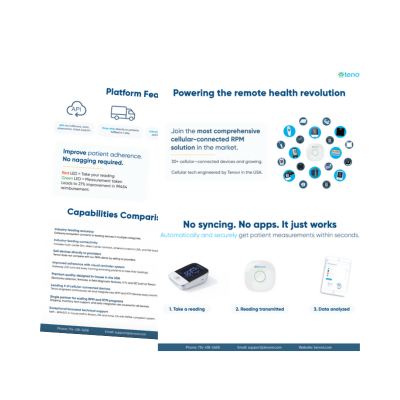Remote patient monitoring (RPM) continues to move beyond traditional outpatient care and into the high-acuity world of chronic disease management. A new review published in the South Eastern European Journal of Public Health takes a close look at hemodialysis, one of the most data-intensive areas of care. The research covers the integration of computer technology, EHR systems, and RPM tools and how they are changing outcomes for patients with end-stage renal disease (ESRD).
At the center of this transformation is EHR integration with remote patient monitoring.
Hemodialysis: Higher Data Needs
Hemodialysis patients undergo treatment multiple times per week to filter waste and fluids their kidneys can no longer remove. This process demands precise, real-time monitoring of blood pressure, heart rate, blood flow rates, ultrafiltration volume, and biochemical markers.
The review outlines how modern hemodialysis machines now collect this data automatically via embedded sensors, feeding it directly into remote patient monitoring software. When paired with EHR integration, this system centralizes patient data so clinicians can view and act on trends over time rather than in isolation.
This shift from manual tracking to integrated data systems enables:
- Faster detection of complications
- Personalized dialysis prescriptions
- Improved long-term tracking of vascular access or fluid retention issues
EHR Integration with RPM Enables Real-Time Decision Support
According to the study, advanced RPM systems in dialysis settings go beyond passive data collection. Real-time monitoring capabilities detect and alert clinicians to changes like hypotension, clotting risk, or machine malfunction. These alerts, when linked to the EHR, build a historical, searchable log of patient events and clinical responses.
That kind of traceability is particularly valuable in hemodialysis, where even brief lapses in monitoring can escalate into life-threatening complications. By incorporating alerts, vitals, and intervention records into the patient’s longitudinal chart, EHR integration with remote patient monitoring creates a more complete and accurate clinical picture—accessible across care settings.
Expanding Access: Remote Monitoring and Telemedicine for Dialysis Patients
The study also covers the growing adoption of home-based hemodialysis, enabled by telemedicine platforms and connected RPM devices. For patients who live far from dialysis centers or require more flexible treatment options, IoT-enabled systems offer real-time transmission of key vitals back to care teams. This model enhances access without compromising oversight.
What makes this scalable is the software’s ability to integrate with EHRs to ensure that even remotely collected data is recorded in the same system as in-clinic treatments. The ability to seamlessly consolidate in-person and remote care data is where EHR integration with remote patient monitoring plays a critical role in continuity of care.
The Role of AI and Predictive Analytics Inside RPM Platforms
The review devotes considerable attention to AI and machine learning tools that analyze hemodialysis data to predict complications. These tools can detect subtle, early indicators of events like vascular access failure or intradialytic hypotension.
Once processed, these predictive models feed their outputs into dashboards or directly into patient records via EHR-integrated RPM software. Clinicians can then act before a complication occurs, adjusting fluid removal rates or dialysis session timing accordingly.
It’s not just about prediction—it’s about making that insight actionable within the existing clinical workflow.
Big Data and the EHR: More Than Just Records
The study highlights the value of big data analytics in uncovering trends across large populations of dialysis patients. With so many sessions per week and so much data per session, manually spotting correlations would be nearly impossible.
But with EHR integration with remote patient monitoring, these insights can be aggregated across systems and geographies, supporting population health initiatives, clinical research, and protocol optimization.
For example, by correlating treatment parameters with long-term outcomes, providers can adjust dialysis regimens across their entire patient base, not just at the individual level.
Addressing the Barriers: Interoperability and Data Integrity
Despite these advancements, the review doesn’t shy away from the ongoing challenges. Data security, interoperability between systems, and workforce training remain persistent hurdles. The integration of EHRs with RPM platforms often suffers from inconsistent standards or limited APIs, which can compromise real-time insights or delay documentation.
To address these issues, the study calls for improved interoperability standards, as well as advanced safeguards like encryption, audit trails, and even blockchain technologies to protect data integrity across connected systems.
Why EHR Integration with Remote Patient Monitoring Is the Future
This review offers more than just a checklist of tech tools—it illustrates a clear direction for digital health: one where monitoring and documentation are no longer separate, siloed tasks, but part of a continuous feedback loop.
In the case of hemodialysis, where timing, accuracy, and trend analysis are critical, EHR integration with remote patient monitoring ensures that no data point is lost and no warning sign is missed.
As healthcare moves further into value-based models, these integrated systems offer a scalable way to improve patient outcomes while reducing the burden on clinical teams.





